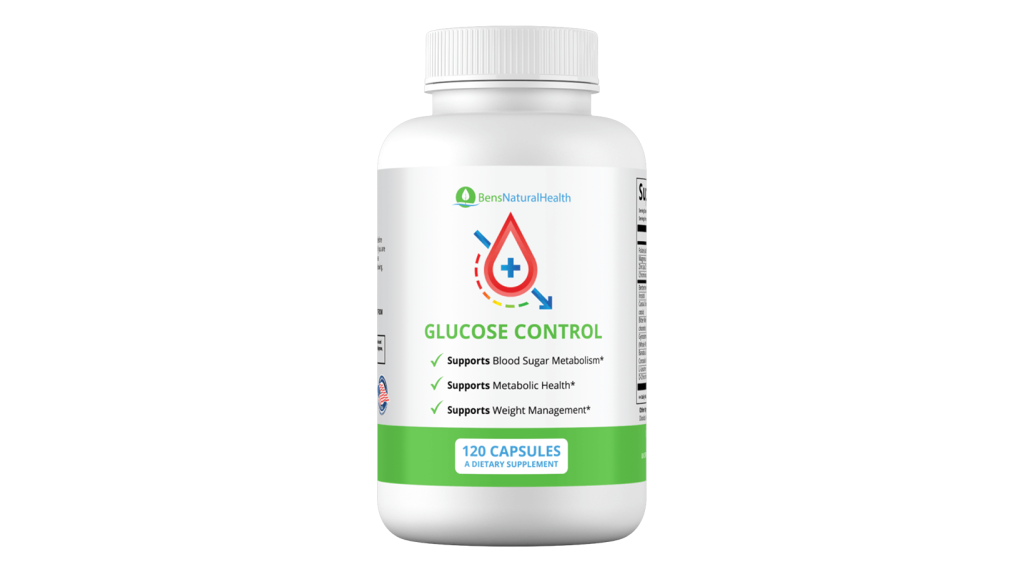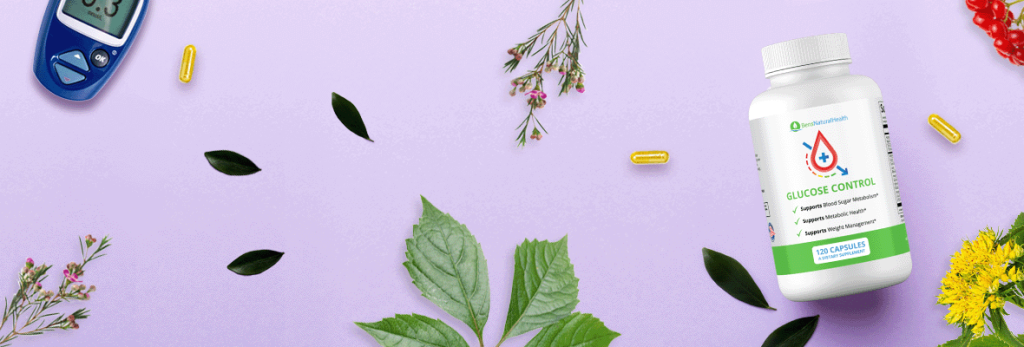A diabetes diagnosis can be a bit scary, or it can be a relief to pinpoint why you haven’t been feeling yourself.
The world of diabetes management can be a daunting place.
Here we break it down so you can work with your providers and optimize your care.
Diabetes is a group of diseases. In this state, the body has stopped producing insulin or is not making enough insulin.
If the body is still producing insulin, it may not be using it correctly. Or it can be a combination of both.
When any of these things happen, the body is unable to get sugar from the blood into the cells. That leads to high blood sugar levels.
Types Of Diabetes
Diabetes Mellitus classifies into three groups, Type 1, Type 2, and Gestational. Researchers are now identifying three more types. Today we explore the first 3.
Both Type 1 & 2 are chronic conditions, and Diabetes Gestational is unique to pregnancy. Glucose is found in the foods we eat to fuel our body’s cells. Insulin act like the key to the cells to allow the glucose in.
Blood sugar/blood glucose is the concentration of sugar in your blood. When there is not enough insulin in the blood or the body is resistant to insulin, the body cannot use glucose.
Get Your FREE Diabetes Diet Plan
- 15 foods to naturally lower blood sugar levels
- 3 day sample meal plan
- Designed exclusively by our nutritionist
Type 1 Diabetes
Type 1 diabetes is an autoimmune disease. In the past, it was identified as Juvenile diabetes, as it appeared in young people.
In this disease state, the body begins to attack the beta cells of the pancreas. The beta cells are responsible for making insulin.
The damage is, unfortunately, permanent. The body doesn’t produce insulin and requires that insulin therapy be given.
Scientists believe the attack is genetic and environmental. The sudden onset of these symptoms is what often prompts treatment and diagnosis.
The symptoms of type 1 diabetes include:
- Sudden, rapid weight loss
- Increased thirst
- Increased urination
- Increase in hunger
- Decrease in energy level
- Dry, itchy skin
- Slow-healing wounds
Type 1 diabetes can cause these symptoms and a situation called Diabetic Ketoacidosis. Diabetic Ketoacidosis is a life-threatening situation. High blood sugars lead to the buildup of an acid called ketones.
Ketones are present in your blood when you don’t have enough insulin to respond to glucose. The increase of ketones can lead to unresponsiveness and a coma state. The above symptoms may occurs and also the following:
- confusion
- a flushed face
- rapid breathing
- fruity-smelling breath
Type 2 Diabetes
In type 2 diabetes, the body doesn’t respond to the insulin the way it should or doesn’t make enough.
Common symptoms of type 2 diabetes include:
- Frequent urination, particularly at night
- Increased thirst
- Increased hunger
- Extreme fatigue/feeling tired a lot
- Delayed wound healing
- Tingling sensation or numbness in the extremities, sometimes pain.
Some people may notice a darkening of the skin, often exhibited in the neck, knees or armpits. This darkening is Anthacosis Nigricans.
Type 2 diabetes can be controlled by exercise, weight loss, and dietary and lifestyle changes. Syndrome X typically occurs by excess consumption of refined carbohydrates. This leads to weight gain and causes the cells to be less sensitive to insulin.
High blood sugar (Hyperglycemia) ensues and decreases glucose tolerance. As this develops, other health concerns emerge. Blood pressure elevates, elevated cholesterol levels develop, risk of cardiovascular disease increases and type 2 diabetes.
Gestational Diabetes
Gestational Diabetes can be unique to the pregnancy or can continue postpartum. A small percentage of women will develop this while pregnant. It is detected by an oral glucose tolerance test between 24-28 weeks gestation.
Gestational Diabetes is diagnosed if abnormal amounts of glucose are in the urine.
Many can control this type of diabetes with lifestyle changes. Some cases may need insulin. When treated, there is little risk of complications. Untreated, it may cause complications during and after birth. These include:
- High Birth Weight
- Incidence of C-section
- Preterm Labor
- Stillbirth
- Respiratory distress during labor
- Later Onset of Type 2 diabetes for both the mother and child
There are some risk factors involved, including:
- Pre-pregnancy overweight
- Genetic factors
- Non-white ethnicity
- Prior deliveries of a baby 9lbs+
- A direct relative that has diabetes
- A lack of physical activity
- Polycystic Ovarian Syndrome
In a person with diabetes the following are recommendations in regards to blood glucose levels:
- Fasting blood sugar (in the morning, before eating): under 100 mg/dL
- 1 hour after a meal: 90 to 130 mg/dL
- 2 hours after a meal: 90 to 110 mg/dL
- 5 or more hours after eating: 70 to 90 mg/dL
Possible Complications of Diabetes
Elevated blood sugar levels should be monitored. Further complications like diabetic retinopathy, a condition of the eye can be minimized with tight control.
A diabetic coma can occur if blood sugar levels are too high or too low. This is a life-threatening situation. If you are unable to respond to stimuli and left untreated, it could be deadly.
If your blood sugar level is too high, you may experience:
- Increased thirst
- Fatigue
- Frequent urination
- Shortness of breath
- Nausea and vomiting
- A very dry mouth
- Stomach pain
- Fruity breath odor (caused by ketone bodies breaking down)
- A rapid heartbeat
If your blood sugar level is too low (hypoglycemia), you may experience:
- Shakiness or nervousness
- Fatigue
- Anxiety
- Weakness
- Confusion
- Dizziness or lightheadedness
- Sweating
- Hunger
- Nausea
- Difficulty speaking
Diabetes Medications
Insulin
In Type 1 Diabetes, insulin is always needed to control blood sugar levels. It can also be necessary for other types of diabetes too.
Insulin falls into three classifications: Short, Rapid, and Long-Acting Insulin. There are also many combinations of these three types called Mixed Insulins.
- Rapid acting insulin covers mealtime blood sugar needs, 20-30 minutes before a meal.
- Intermediate Insulin is usually given twice a day providing peak less prolonged support.
- Long-Acting can cover insulin needs up to 24 hours.
Lifestyle management is trialed. If blood sugar goals are not achieved, prescription oral medications are recommended. There are 8 oral diabetes medications classes. These two classes are the typical first line of defense.
All medications bear a risk of side effects and are initiated with your physician. A guide to check if your medications are working properly is to have your Hemoglobin A1c (HgbA1C) measured. An A1C is a three month average of your blood sugar levels.
Your physician will check this throughout the year. A1C measurements can define a healthy range <5.7, prediabetes 5.7%-6.3%, 6.4%, and higher diabetes. The A1C will help determine the level of intervention needed for your diabetes treatment by your practitioner.
Biguanides
These medications have minimal side effects. One example is metformin. It works by lowering the amount of sugar produced by the liver. In addition, it increases muscle sensitivity.
The benefits of this class of medications are a decrease in cholesterol level, no weight gain, or hypoglycemia. This medication lowers your A1C 1.0-2.0%
Sulfonylureas (glyburide, glipizide, glimepiride)
Side effects include weight gain and hypoglycemia. Sulfonylureas act by helping the beta cells in your pancreas by sustaining the release of insulin.
This medication is eliminated via the kidney. Glyburide is the most likely of the three to cause hypoglycemia. Your A1C can be lowered 1.0%-2.0%
DPP4 Inhibitors (Januvia, Onglyza, Trajenta, Nesina)
They act by increasing the action of gut hormones and delays gastric emptying. Side effects include upper respiratory infections and headaches, nasopharyngitis.
If symptoms like nausea, abdominal pain, or vomiting occur, report this to your physician immediately. A1C can be lowered by .6%-.8%
SGLT2 Inhibitors (Invokana, Jardiance, Farxiga)
These medications decrease glucose reabsorption in the Kidneys. Side Effects include UTIs and hypotension. Increased urination and genital infections can occur. Anyone with a history of bladder cancer should avoid Farxiga.
SLGT2 Inhibitors are known for reducing cardiovascular events in diabetes. SLGT2’s lower A1C .7%-1.5%. Weight loss nets 1-3lbs.
TZD’s (Actos, Avandia)
Increase insulin sensitivity within cells. TZD’s have a black box warning for Coronary Heart Disease. While on this class weight gain and edema is monitored. Actos may increase the risk of bladder cancer. TZD’s lower the A1C .4%-1.0%.
Glucosidase Inhibitors (Precose, Glyset)
Delay Carb carbohydrate absorption. Caution is used with liver or kidney issues. The initiation of this medication can cause some initial gastrointestinal distress. Glucosidase Inhibitor dosage should be increased gradually.
Hypoglycemia can occur and should be treated with glucose tabs. Alpha Glucosidase Inhibitors lower A1C .5%-1.0%.
Dopamine Receptor Agonists (Cycloset)
This diabetes medication resets the Circadian Rhythm. This medication is taken within two hours of waking.
Side effects of Cycloset and similar medications include nausea, headache, fatigue, hypotension, syncope, and drowsiness. Dopamine Receptor Agonists lower the A1C .6%-.9%.
Meglitinides (Prandin, Starlix)
This medication stimulates a rapid insulin burst. Because of this, it should be taken with meals. Weight gain and hypoglycemia are common side effects. Meglitinides lower A1C 1.0%-2.0%.
Each person will have a varying response if you are using insulin or oral medications. Some response is immediate, and others you will have to wait some time for results.
Here is a general guide:
- All Insulins Alpha glucosidase Inhibitors, GLP-1 Inhibitors, Meglitinides, Sulfonylureas, work with the first dose
- GPP4’s, Biguanides, and SGLT 2 Inhibitors work within two weeks.
- GLP-1 Receptor Agonists and TZD’s can take longer than two weeks
In 2017, the American Diabetes Association noted in a report on standards of care that diabetes is a “complex, chronic illness requiring continuous medical care with multifactorial risk-reduction strategies beyond glycemic control.”
Medical intervention, along with lifestyle changes, a diabetic’s lifespan can be increased. There is a risk of some side effects with oral medications for people with diabetes. Tighter blood sugar control ensures better health. Better health means living a longer, more satisfying life.
Self-management is crucial and means understanding how to:
- Eat Healthy
- How to take your diabetes medicines
- How to combat symptoms including hyperglycemia and hypoglycemia, fatigue, and pain
- Learn how to develop a relationship with your provider
Beyond Medication, what can I do?
We mentioned earlier that lifestyle modifications could reduce symptoms and comorbidities. While insulin and medications play an integral role in management, many seek alternatives.
The documentation of diabetes dates back thousands of years. Hieroglyphics in manuscripts from ancient Egypt describe excessive thirst and urination.
Today we would know this as Type 1 diabetes. In India, they used the help of insects to diagnose the disease. If the sugar-loving ants came rushing to the urine, a diagnosis of “madhumeha” was given, which translates to “honey urine.”
People with diabetes have an increase of sugar in the urine, making this form of diagnosis reliable. Today modern medicine relies on the HcA1c test. In China, they associated the disease with influence. Those with resources like food often were overweight. They identified this as a disease with social status.
Greek Physicians have coined the name Diabetes Mellitus. “Diabetes” meaning to pass through (as in kidneys) and Mellitus meaning honey. Diabetes has long been known as a disease associated with overweight.
Ancient Egyptians understood the relationship with diabetes and the diet, and prescribed a diet of whole grains.
As we have evolved so has our understanding of the disease and treatment. It wasn’t too long ago that we began to understand the diet and disease connection. Today our approach is disease prevention, dietary intervention, and management.

Supplements for diabetes management
Supplements are not a standalone treatment. They are used in conjunction with your practitioner’s advice on lifestyle modifications and medication. Here we will explore the most popular supplements.
Cinnamon
Cinnamon has been shown to help with many issues surrounding diabetes.
- Decrease in lipids, or fats, in the blood
- Increase in insulin and insulin sensitivity
- Increase antioxidant use
- Lower Blood pressure
- Reduce Weight
- Aide indigestion
Bitter Melon
This is a Chinese or Indian fruit. The taste, well is quite bitter and better used as a supplement for ingestion
- Has anti-inflammatory properties
- Aides indigestion
- Helps with insulin resistance
- Pain associated with Diabetic Neuropathy
Fenugreek
This s an herb where all parts of the plant have health benefits:
- Improve Insulin action and insulin sensitivity
- Reduce the amount of glucose absorbed in the intestinal tract
- Slow down gastric emptying
Chromium
Chromium is in food items like English muffins, beef, potatoes, broccoli, bananas, orange juice, and apples. It takes part in the metabolism of carbohydrates, fats, and proteins. Chromium aids in the use of insulin.
Some patients have a chromium deficiency. Supplementation may help to reduce body weight and help with composition and lipid metabolism.
Bilberry
The European version of a blueberry. These contain powerful antioxidants that reduce inflammation markers. These markers are associated with Syndrome X.
A study conducted at the Department of Nutritional the University of Eastern Finland found that those that had regular consumption of Bilberry had a 20% reduction compared to their counterparts that had no change in diet. It has helped many with diabetic neuropathy pain.
We know that diabetes is a state of inflammation, and many of the above items combat that. These items try to incorporate in your culinary adventures as well.
Basil
Helps to lower blood sugar, try it in pasta or pesto.
Fennel
Has anti-inflammatory properties. The Fennel bulb prepared roasted, or the seeds toasted used as a seasoning or tea.
Garlic
Garlic combats cytokines that cause the largest inflammation response in the body. It is great sautéed into any dish, stir-fried, Italian dishes, or roasted for a spread.
Rosemary
Contains a phytochemical that reduces stress, and fights inflammation. Try it in seasoning roasts, Italian dishes, stews, and stir-fries.
Sage
Sage has antiviral properties. It shows some promise with Alzheimer’s and fights inflammation associated with diabetes. Try using it in tea, roasts and seafood dishes.
Ginger
Ginger is famous for its anti-inflammatory properties. It aids in weight loss by helping with lipid reduction. Try it in broths, flavorful stews, tea, or in desserts.
Dill
Its use in diabetes management is still developing. It goes great in dips, yogurt, fish, and eggs.
Dandelion
Can help heal your liver and cleanse your blood. Dandelion greens are great in salads.
Cumin
This can help lower cholesterol and blood pressure. Cumin is great with lentils, meat dishes, and rice
Stevia
Stevia is popular among diabetics because it won’t spike your blood sugar levels. In fact, it helps with postprandial blood sugar levels (post-meal). Used as a sweetener in baking, and a sweetener in coffee.
Tarragon
Lower insulin resistance and decreases overeating. Tarragon is tasty with poultry, in soups and dips.
Turmeric
This is another powerful plant. It has bioactive ingredients that fight inflammation associated both with overweight and diabetes. It also lowers blood sugar levels and triglycerides.
Peppermint
Contains antioxidants that help with inflammation. Try it in a tea, or in oil form to freshen your breath.
Ben’s Natural Type 2 Diabetes Supplement: Glucose Control
Ben’s Glucose Control, one of the leading supplements for type 2 diabetes, contains clinically proven, natural ingredients to reverse type 2 diabetes and help stabilize and maintain an optimal blood sugar level.

Clinically formulated, Glucose Control works to regenerate your pancreas, aid weight loss, alleviate diabetic symptoms, prevent oxidative damage and prevent the progression of diabetes.
Conclusion
Before Western medicine, people utilized plants such as herbs and barks as remedies. These items that the environment provided treated ailments and pain.
Approximately 25% of modern prescription medications have at least one plant or herb-derived substance as ingredients.
Ethnobotany is a field that links traditional healers to modern medicine for medication development. This makes it no surprise that many find a balance between lifestyle modifications, herbs, and supplements.
A good patient and physician relationship are essential in diabetes care and success. Working with your physician will help you pinpoint the correct action of treatment. Surrounding yourself with the knowledge and a supportive team is the key to a long healthy life as a diabetic.
Explore More








